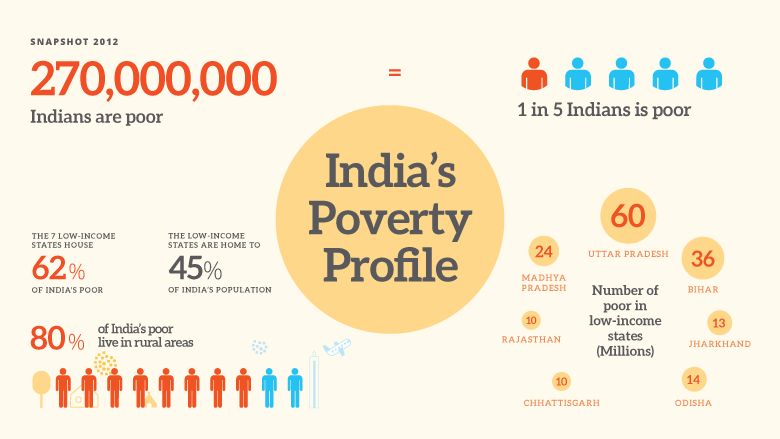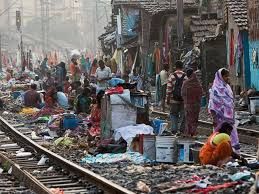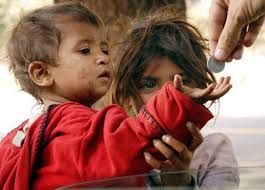Poverty: An Unwinnable Fight?
May 06, 2019 • 10 views
In a country well governed, poverty is something to be ashamed of. In a country badly governed, wealth is something to be ashamed of.
In the simplest term, Poverty may be defined as a social condition where individuals do not have financial means to meet the most basic standards of life that is acceptable by the society. Individuals experiencing poverty do not have the means to pay for basic needs of daily life like food, clothes and shelter. The direct consequences arising from this problem are hunger, malnutrition and susceptibility to diseases which have been identified as major problems across the world. It impacts individuals in a socio-psychological way with them not being able to afford simple recreational activities and getting progressively marginalized in the society.
The World Bank has updated its international poverty line figures to 1.90 USD (Rs. 123.5) per day on October 2015 (based on prices of commodities in year 2011-2012), from 1.5 USD(Rs. 81) as a response to the changes in the cost of living across the world as per current economy. The organization estimates that – “Just over 900 million people globally lived under this line in 2012 (based on the latest available data), and we project that in 2015, just over 700 million are living in extreme poverty.”

Poverty is a worldwide cause of concern even in economically stable countries like the USA. Current statistics state that over half the populations in the world, about 3 billion people, are forced to live on less than 2.5 dollars per day. In India, as per 2014 government reports, monthly per capita consumption expenditure is Rs. 972 per person in rural areas and Rs. 1407 per person in urban areas.
Causes of Poverty in India
Factors contributing to the increasing problem of poverty in the country are many and they need to be identified and are as follows:
1. Population– The growth of population in the country has so far exceeded the growth in economy and the gross result is that the poverty figures have remained more or less consistent. In rural areas, size of the families is bigger and that translates into lowering the per capita income values and ultimately lowering of standard of living. Population growth spurt also leads to generation of unemployment and that means diluting out of wages for jobs further lowering income.
2. Economic– There is a list of economic reasons behind persistence of the poverty problems which are outlined :
a. Poor Agricultural Infrastructure–Agriculture is the backbone of Indian economy. But outdated farming practices, lack of proper irrigation infrastructure and even lack of formal knowledge of crop handling has affected the productivity in this sector tremendously.
b. Unequal distribution of assets– With the economy changing directions rapidly, the earning structure evolves differently in different economic income groups. Upper and middle income groups see a faster increase in earnings than lower income groups. Also assets like land, cattle as well as realty are distributed disproportionately among the population with certain people owning majority shares than other sectors of the society and their profits from these assets are also unequally distributed. In India it is said that 80% wealth in the country is controlled by just 20% of the population.
c. Unemployment– Another major economic factor that is cause of poverty in the country is the rising unemployment rate. Unemployment rates is high in India and according to a 2015 survey data, at the all-India level, 77% of families do not have a regular source of income.
d. Inflation and Price hike– The term Inflation may be defined as an increase in prices of commodities coinciding with the fall in the purchasing value of money. As a direct consequence of inflation, effective price of food, clothing items as well as real estate rises. The salaries and wages do not rise as much in keeping up with the inflated prices of commodities leading to effective decrease of the per capita income.

3. Social– The various social issues existing the country that contributes towards poverty are:-
a. Education and illiteracy– Not having enough resources to feed their children, the poor consider education to be frivolous, preferring children to start contributing to the family’s income rather than draining them. On the other hand, lack of education and illiteracy prevent individuals from getting better paying jobs and they get stuck at jobs offering minimum wages.
b. Outdated Social Customs– Social customs like the caste system cause segregation and marginalization of certain sections of the society. Certain castes are considered untouchables still and are not employed by upper caste, leaving very specific and low paying jobs that they can live off.
c. Lack of skilled labour– Lack of adequate vocational training makes the huge labour force available in India largely unskilled, which is unsuitable for offering maximum economic value. Lack of education, much less higher education, is also a contributing factor towards this.
e. Corruption– Despite considerable efforts from the government in the forms of various schemes to mollify the poverty situation, allegedly only 30-35% actually reaches the beneficiaries due to wide-spread practices of corruption in the country.
5. Political– In India, socio-economic reform strategies has been largely directed by political interest and are implemented to serve a choice section of the society that is potentially a deciding factor in the elections. As a result, the issue is not addressed in its entirety leaving much scope of improvements.

Solutions to cure poverty
The measures that should be taken to fight the demon of poverty in India are outlined below:-
1. Growth of population at the current rate should be checked by implementation of policies and awareness promoting birth control.
2. All efforts should be made to increase the employment opportunities in the country, either by inviting more foreign investments or by encouraging self-employment schemes.
3. Measures should be taken to bridge the immense gap that remains in distribution in wealth among different levels of the society.
5. Primary needs of people for attaining a satisfactory quality of life like food items, clean drinking water should be available more readily. Improvement of the Subsidy rates on commodities and Public Distribution system should be made.
6.Free high school education and an increased number of functioning health centers should be provided by the government.
By implementing these we can get one step closure to eradicate the poverty in our country which is one of the issue that is stopping us to be a Biggest Economy.
